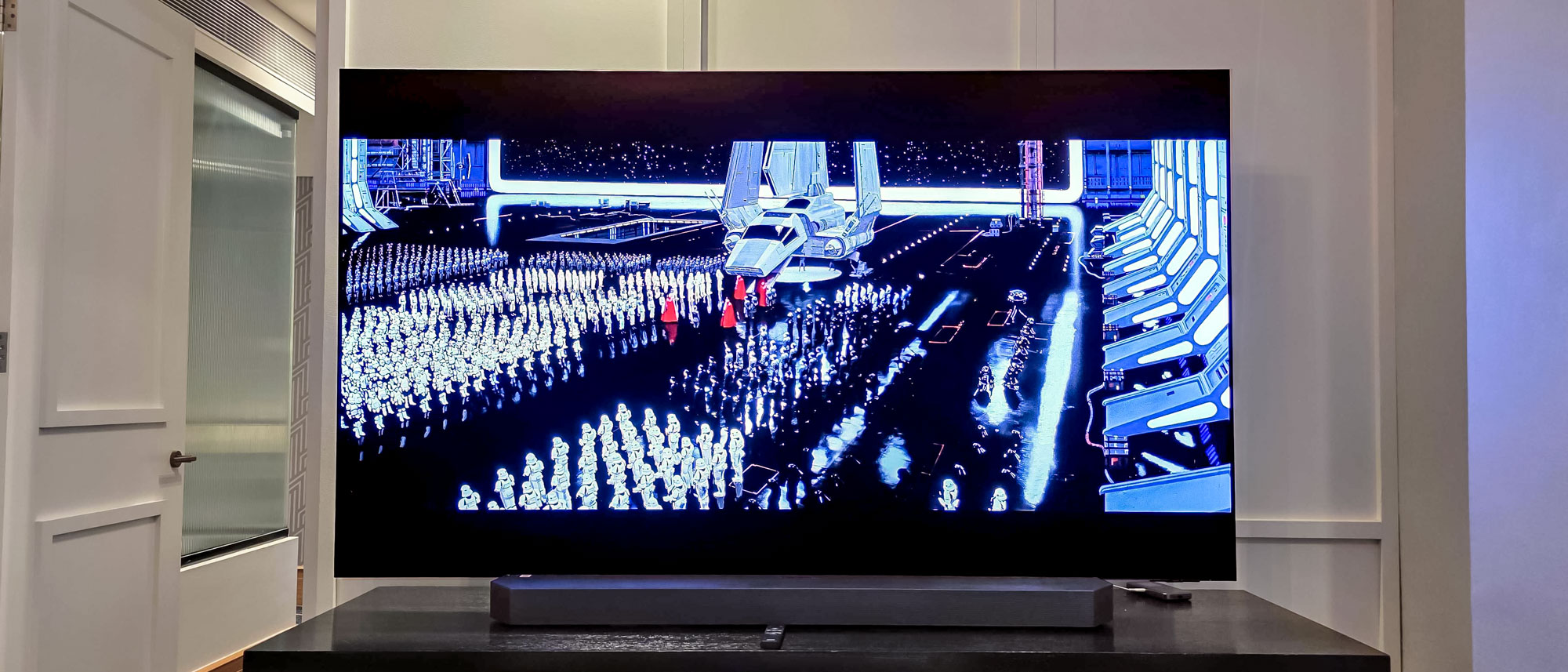Tom's Guide Verdict
An attractive start to Ford's electric ambitions, the Mach-E easily contends with competition from Tesla, and it has a few ergonomic advantages up its sleeve.
Pros
- +
Mature infotainment system includes Apple and Android
- +
Good looks
- +
Excellent safety technology package
Cons
- -
Unexciting handling
- -
We'd like more range, please
Why you can trust Tom's Guide
Release date: Available now.
Price: $49,700 (MSRP); as tested, $59,400.00
Power: 2 motors, AWD
Horsepower: 346 hp
Battery range: 270 miles (extended range battery w. AWD)
0 to 60 mph: 5.1 seconds
Top Speed: 114 mph (limited)
Smarts: Android Auto, Apple Carplay, and Ford's Sync 4A system
More than just a snappy dresser, the all-electric Ford Mustang Mach-E has everything it needs to compete with the likes of electric car superstar Tesla. While not a Mustang in the traditional sense, it still has the looks to draw people in, plus the tech and performance to keep them happy when they're out on the road.
We spent hundreds of miles behind the wheels of a carbonized gray Mustang Mach-E First Edition to see exactly what this car has to offer. The all-wheel-drive machine came with an extended battery offering up to 270 miles, and was able to endure rutted country roads, life-sapping urban congestion and endless highway miles with ease, while the interior smarts made that driving a breeze.
Read on for the rest of our Ford Mustang Mach-E review.
Mustang Mach-E release date, prices, and trim levels
The Mustang Mach-E is available now. It comes in 5 different basic trim levels, each with its own options to give buyers plenty of choices.

The basic Select model starts at $42,895 for the rear-wheel drive (RWD) version with a range of 230 miles with the standard battery and 226 horsepower (hp). Next up is the California Route 1, starting at $49,800, with rear wheel drive, a range of 300 miles with the extended battery and 290 hp. The Premium model of the Mustang Mach-E starts at $47,000 and comes in RWD or AWD models with a maximum rated range of 300 miles with the extended range battery, and it adds features like a panoramic glass roof and Bang & Olufsen sound system.
The First Edition model — our test Mustang Mach-E — starts at $53,800 and is similar to the Premium model but only comes with AWD and the extended range battery. Our everything-but-the-kitchen-sink version includes a carbonized gray paint job and with delivery and destination charges was $59,400.
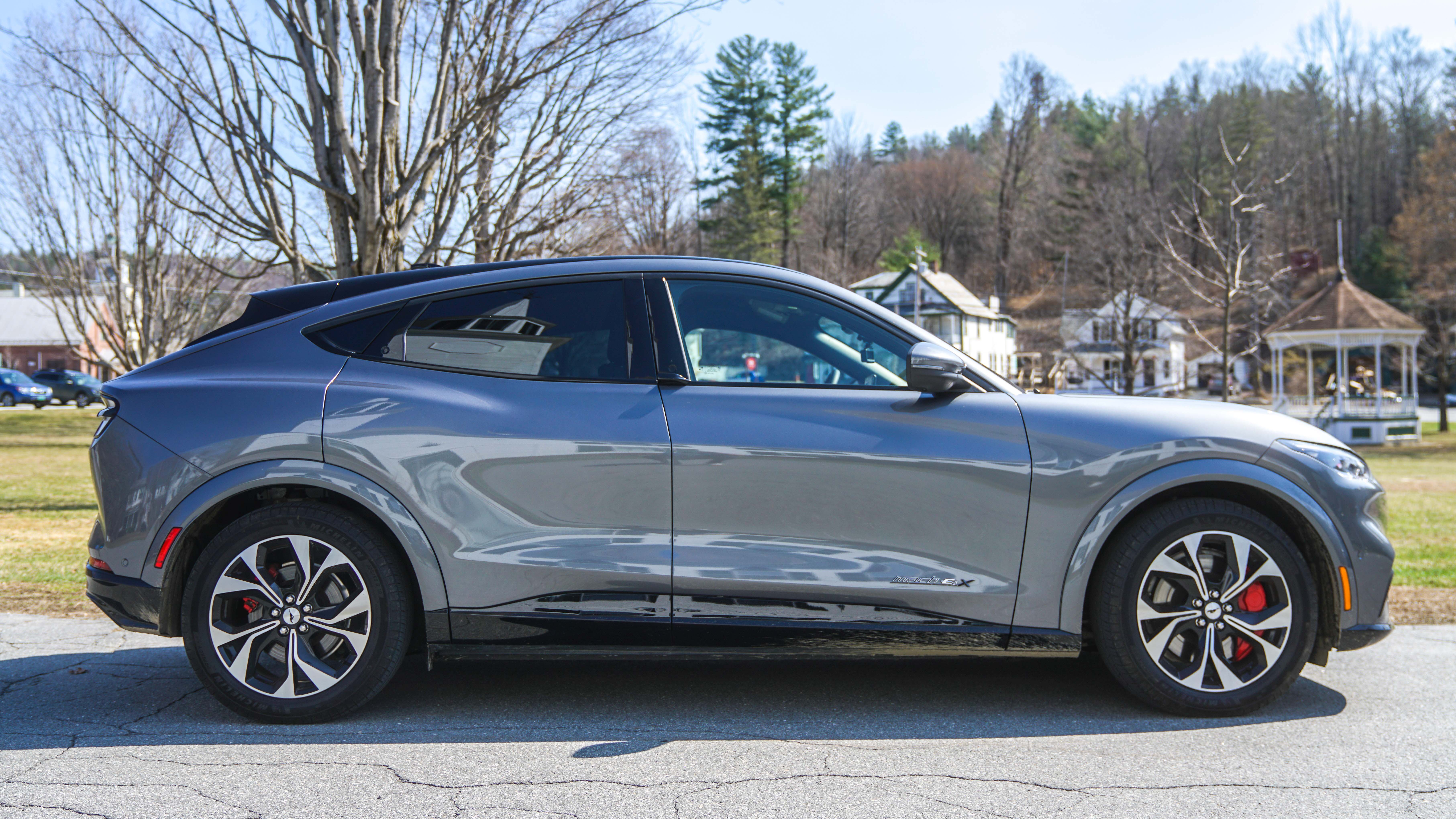
Still to come later this year is the Mustang Mach-E GT starting at $60,500. It will include a performance edition, with 480 hp, huge 20-inch wheels and deliver a 0-to-60 mph time of just 3.1 seconds (compared to the standard 5.1 seconds).
All of the Mustang Mach-E models are currently eligible for the $7,500 federal tax credit, which makes them competitively priced indeed. The tax credit makes it significantly less expensive than, say, a $79,990 Tesla Model X, which doesn't qualify for the discount.
Mustang Mach-E interior and features
Even the base model of the Mustang Mach-E includes a pretty thorough list of intelligent features. It includes keyless entry and ignition and an app to use your phone as the key.
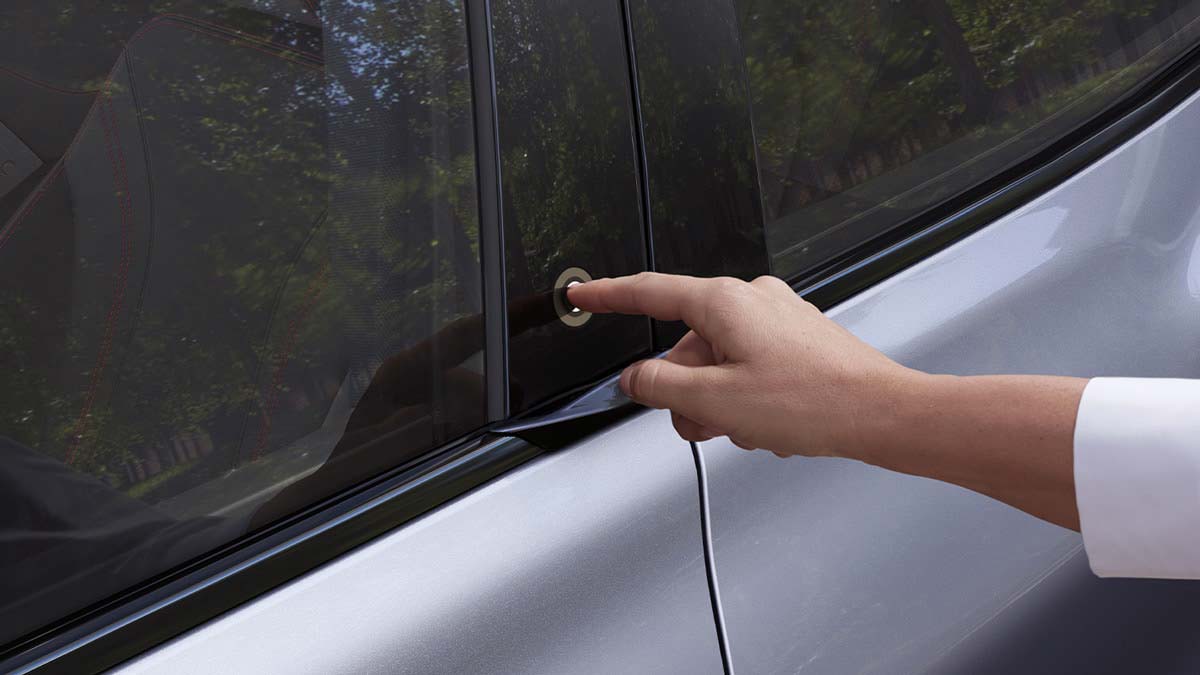
The fully digital LCD displays include a gauge cluster for the driver and a large 15.5-inch central touchscreen for entertainment, navigation, using Android Auto or CarPlay, as well as for making vehicle adjustments.
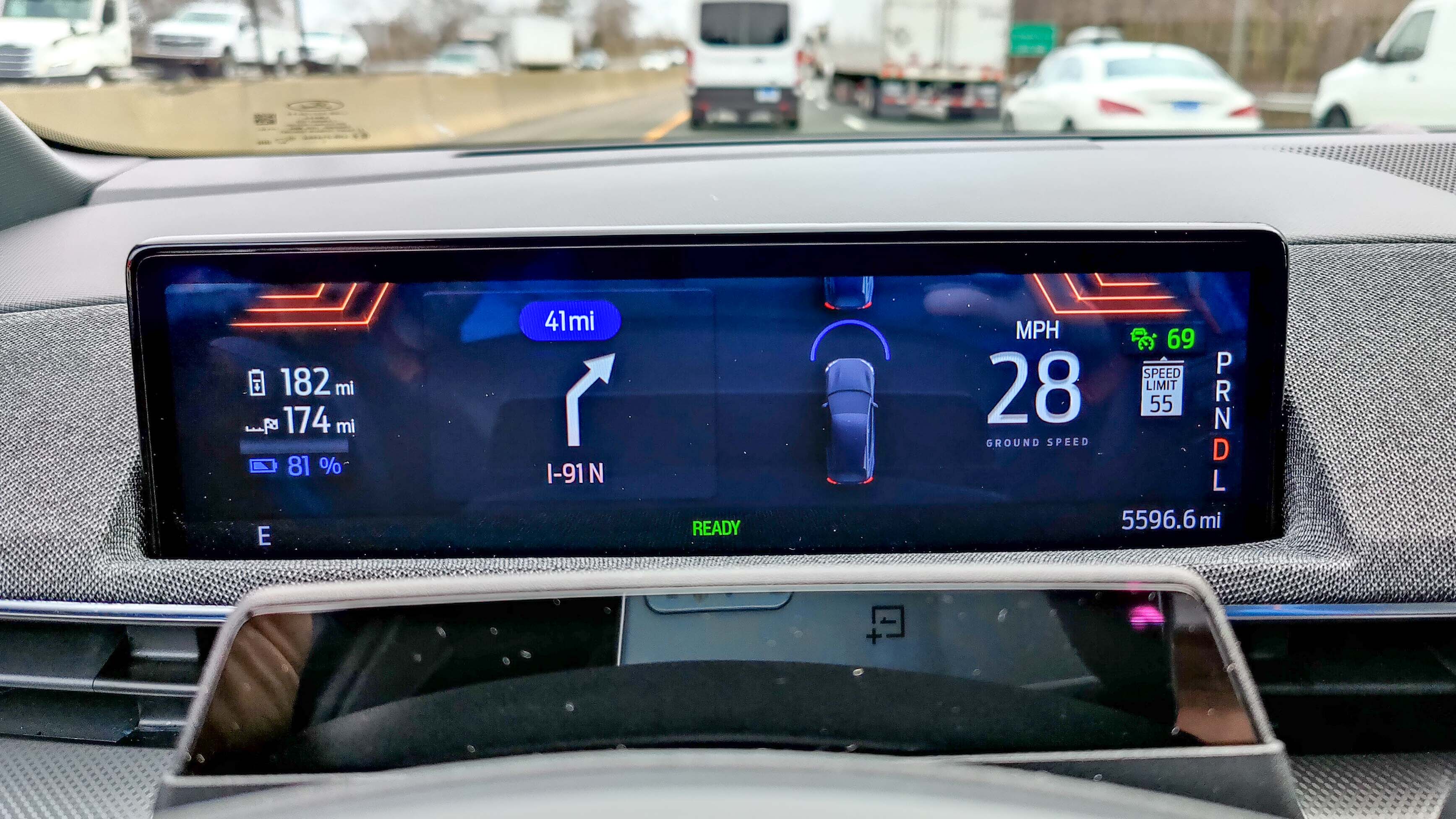
Navigation comes standard as does remote monitoring via the FordPass app, and there's a wireless charging pad for the best phones.
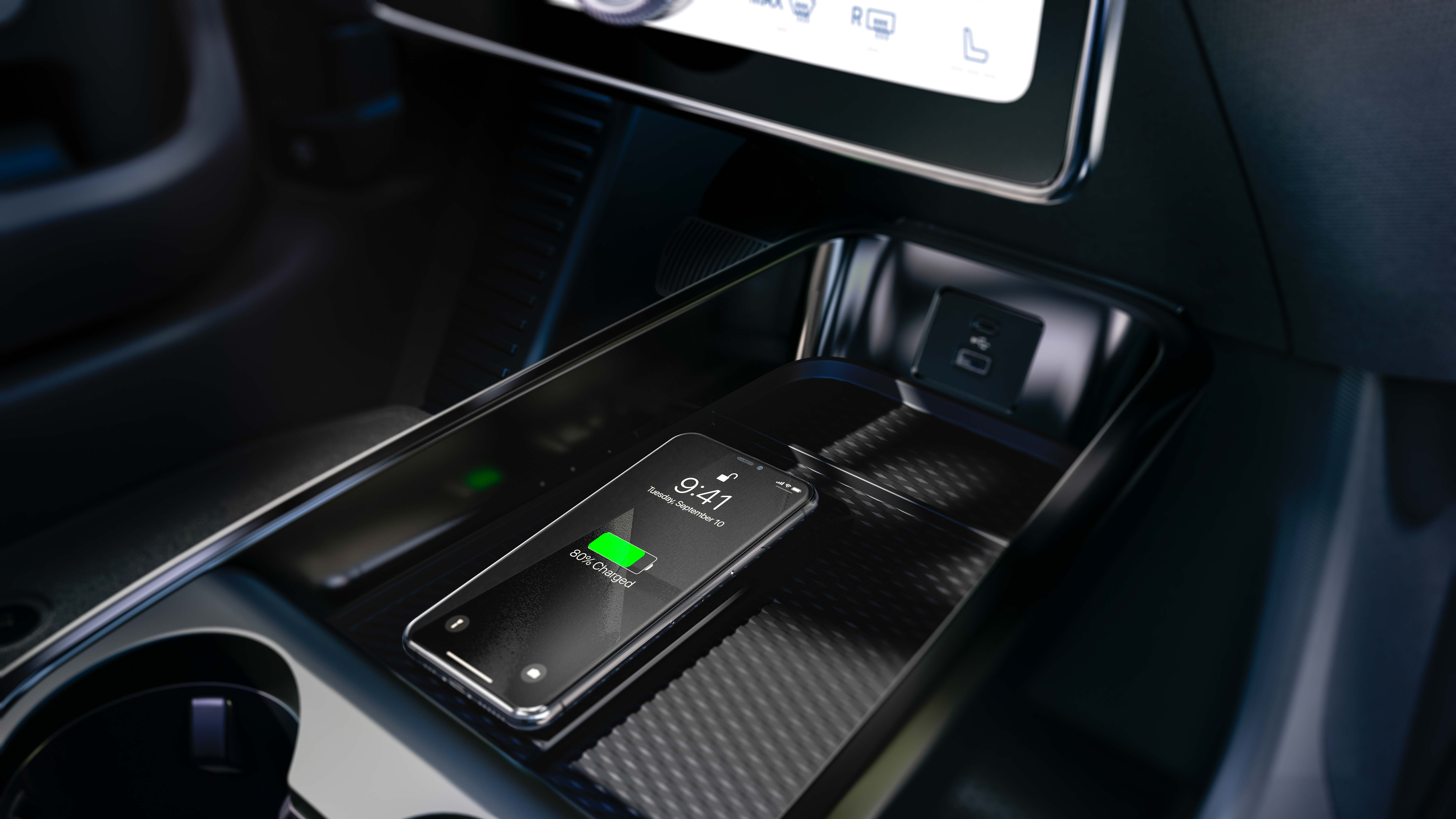
Also standard, is what Ford calls its Co-Pilot 360 2.0 suite of advanced driver assistance safety systems. It includes intelligent adaptive cruise control (which automatically recognizes speed signs), front collision mitigation (which warns of an impending crash and can apply the brakes), blind spot monitoring and rear cross traffic braking (to prevent you from hitting something when you're backing out of a spot), and active lane keeping assist (which nudges the wheel to help keep you in the lane). This is an increasingly common suite of safety systems for cars, but we found all of them helpful without becoming intrusive.
Mustang Mach-E: Test Drive
Some local country people doubted the Mustang Mach-E would survive the rural roads, but its 5.7-inches of clearance proved to be enough and the all-wheel drive prevented it from getting bogged down.
We put several hundred miles on our Mustang Mach-E, from gritty urban streets to interstate highways and twisty country roads. We even threw in some rough muddy back roads for good measure. Through it all, the car comported itself with dignity, which may or may not be what you'd expect from a Mustang.
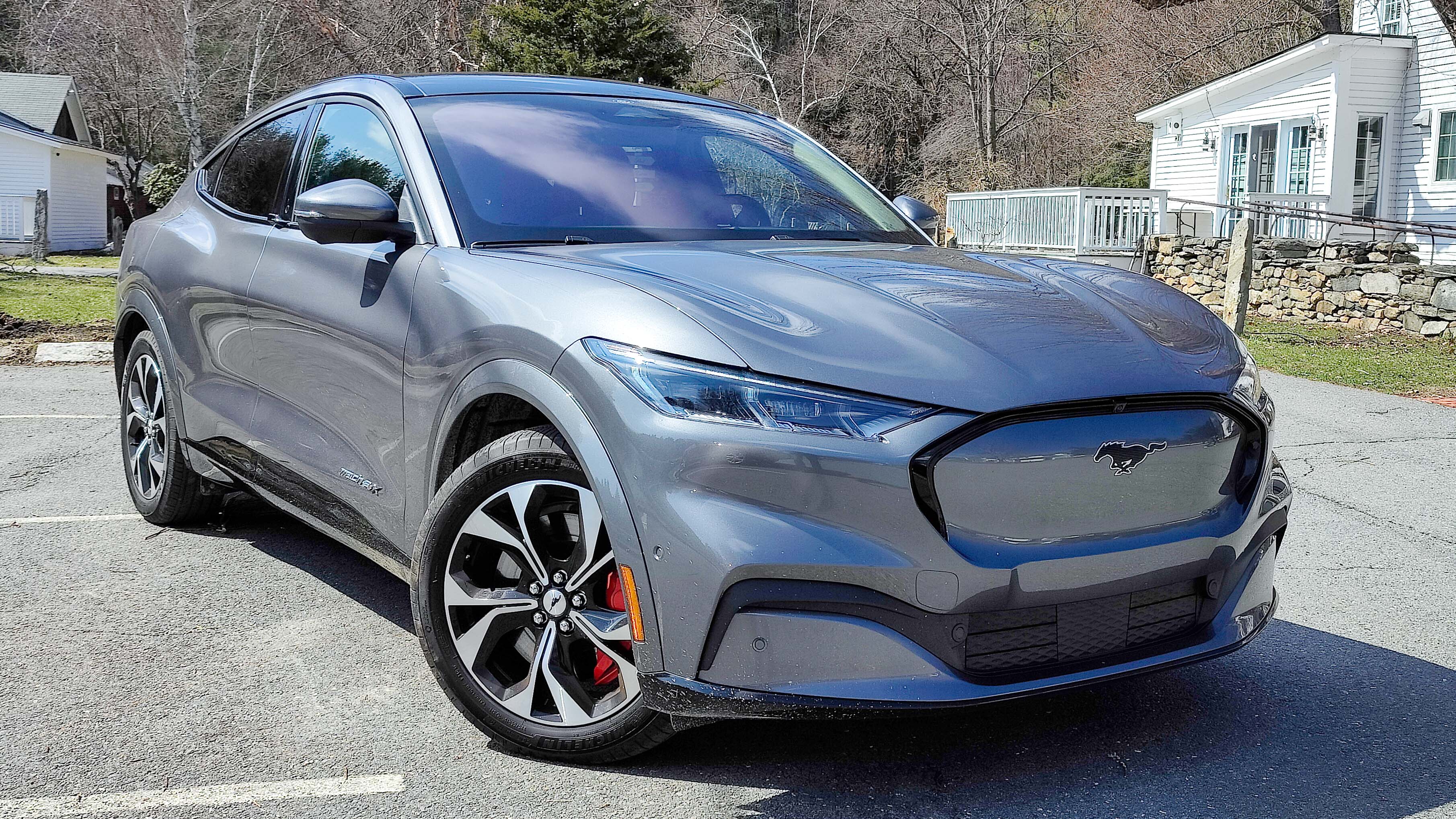
Some local country people doubted the Mustang Mach-E would survive the rural roads, but its 5.7-inches of clearance proved to be enough and the all-wheel drive prevented it from getting bogged down. It's no Land Rover, but this AWD version should handle Northern winters without trouble.
On some of our favorite paved winding mountain roads, the Mach-E did very well, sticking to the corners and tossing around our videographer in the back seat. One doesn't usually think of squealing the tires in an EV — there are too many electronic control systems for that — but we were able to get a few noises from the tires going around corners. You can also turn on artificial "propulsion" sounds that come to life depending on the driving mode you select. There’s Whisper for EV quiet with no added sound, Engage for a few mechanical sonic embellishments, and Unbridled for a whirring, combustion engine-like sound. Sure, the sound effects are rather subtle and it doesn't sound like Steve McQueen's burbling Mustang in Bullitt, but the Mustang Mach-E can still be fun.
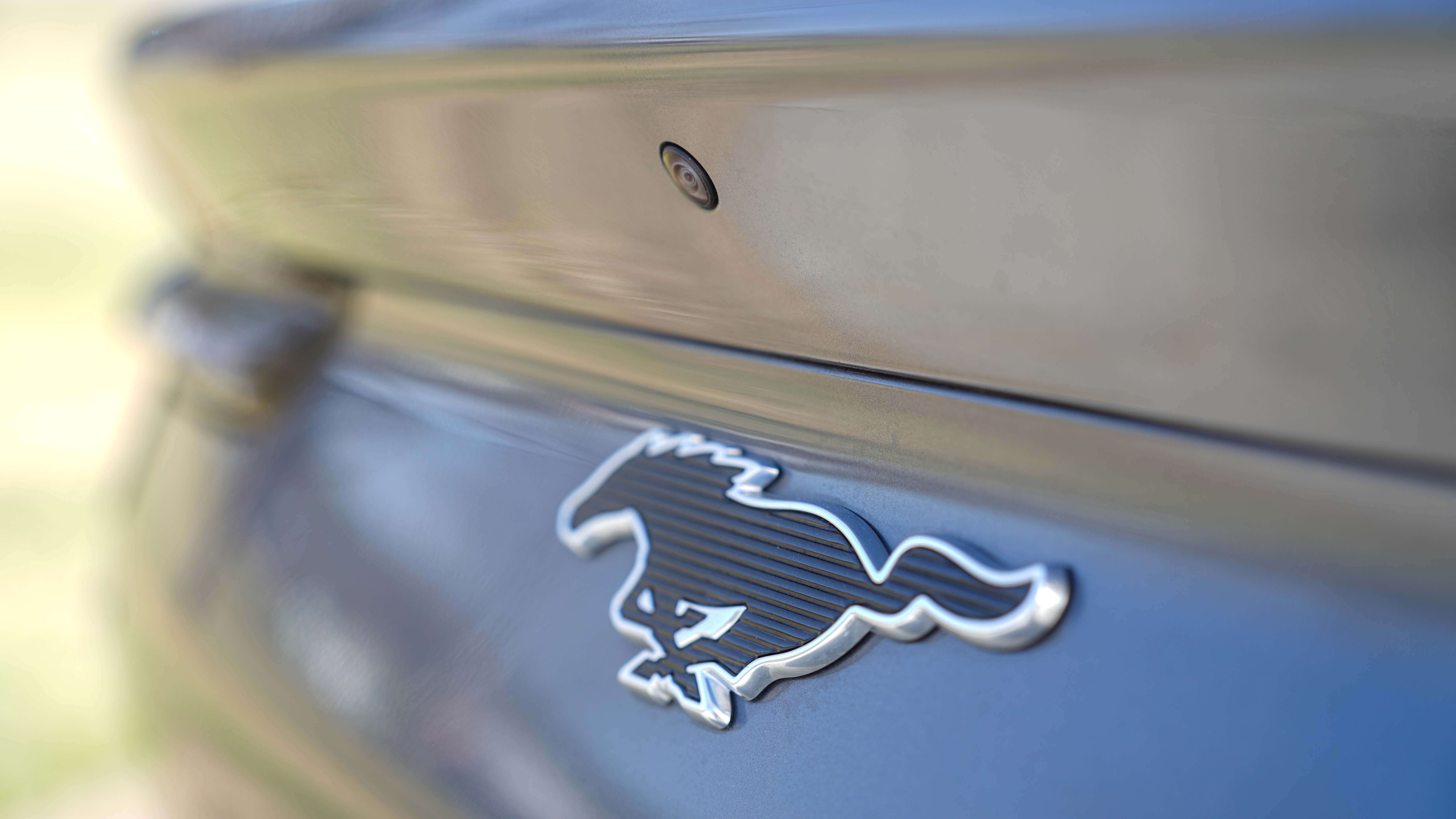
The Mach-E is certainly zippy for a four-door SUV, and while it doesn't have the neck-snapping 3-second 0 to 60 acceleration of some others, when you hit the accelerator it can easily push you back in the seat and elicit a gasp from passengers. It's also luxury-car quiet inside the cabin, so we found it easy to sail well over the speed limit before realizing what was happening.
At low speeds, like parking, the steering could be a bit lighter (many cars tune the steering to feel differently at different speeds), but the wheel isn't excessively heavy.
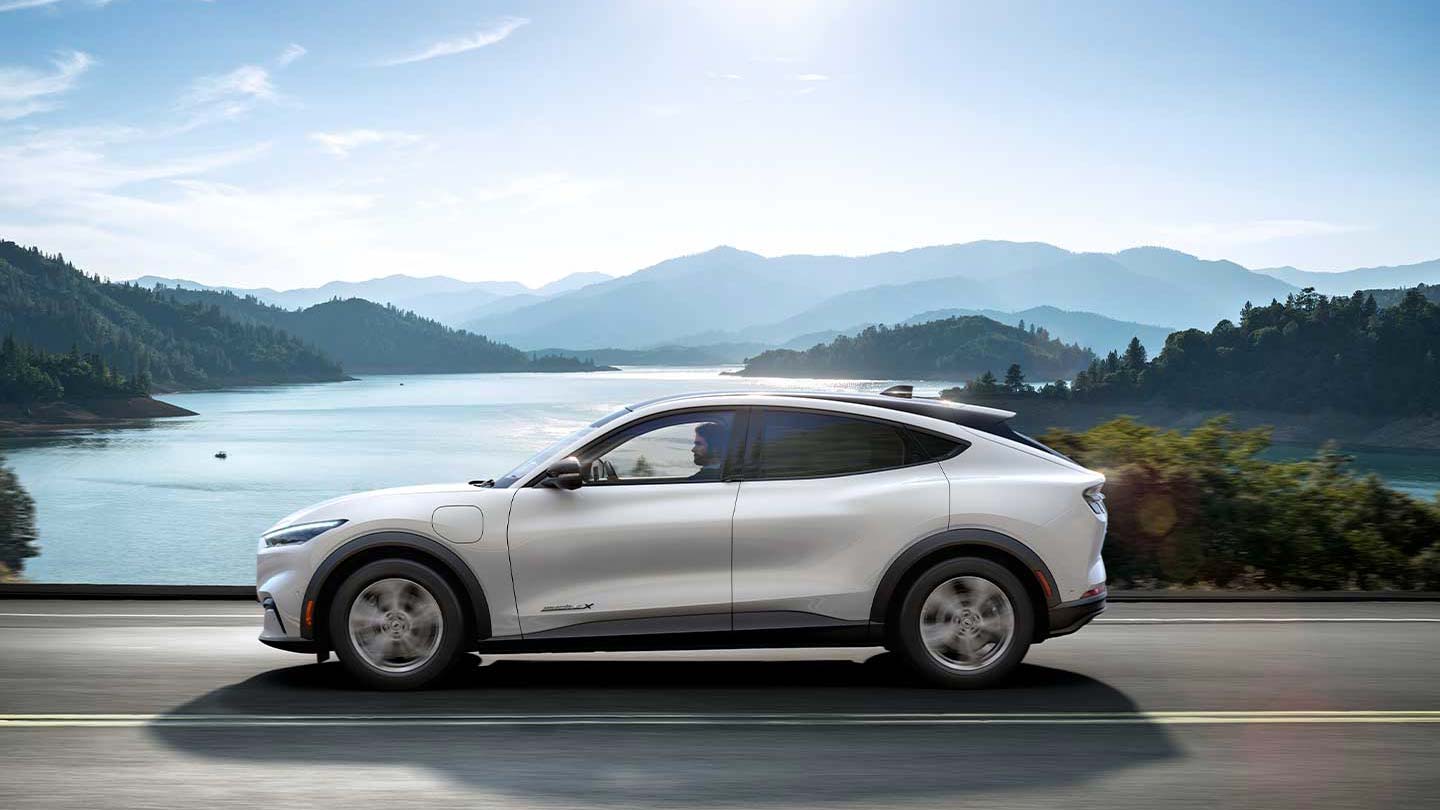
The Mach-E is certainly zippy for a four-door SUV, and while it doesn't have the neck-snapping 3-second 0 to 60 acceleration of some others, when you hit the accelerator it can easily push you back in the seat and elicit a gasp from passengers.
Like most EVs, you can do so-called one pedal driving on the Mach-E. The regenerative braking will slow the car to a complete stop just by lifting your foot from the accelerator (and keep it stopped until you hit the accelerator again). We found Ford's implementation was quite smooth and with a bit of practice one could judge when to lift in order to come to stop at a light or how much (or how little) it would slow the car down heading into a clover leaf.
Mustang Mach-E: Battery and range
We took the Mach-E on some long road trips and in an odd range of warm and frosty days (welcome to the Northeast). It served as a reminder that weather can have a profound effect on battery driving ranges.
With a rated 270-mile 88 kWh extended range battery, in day-to-day driving we received full-charge estimates of 207 to 239 miles. One day we started out with an estimated range of 207 miles, which changed after driving a few miles to a range of 211 miles.
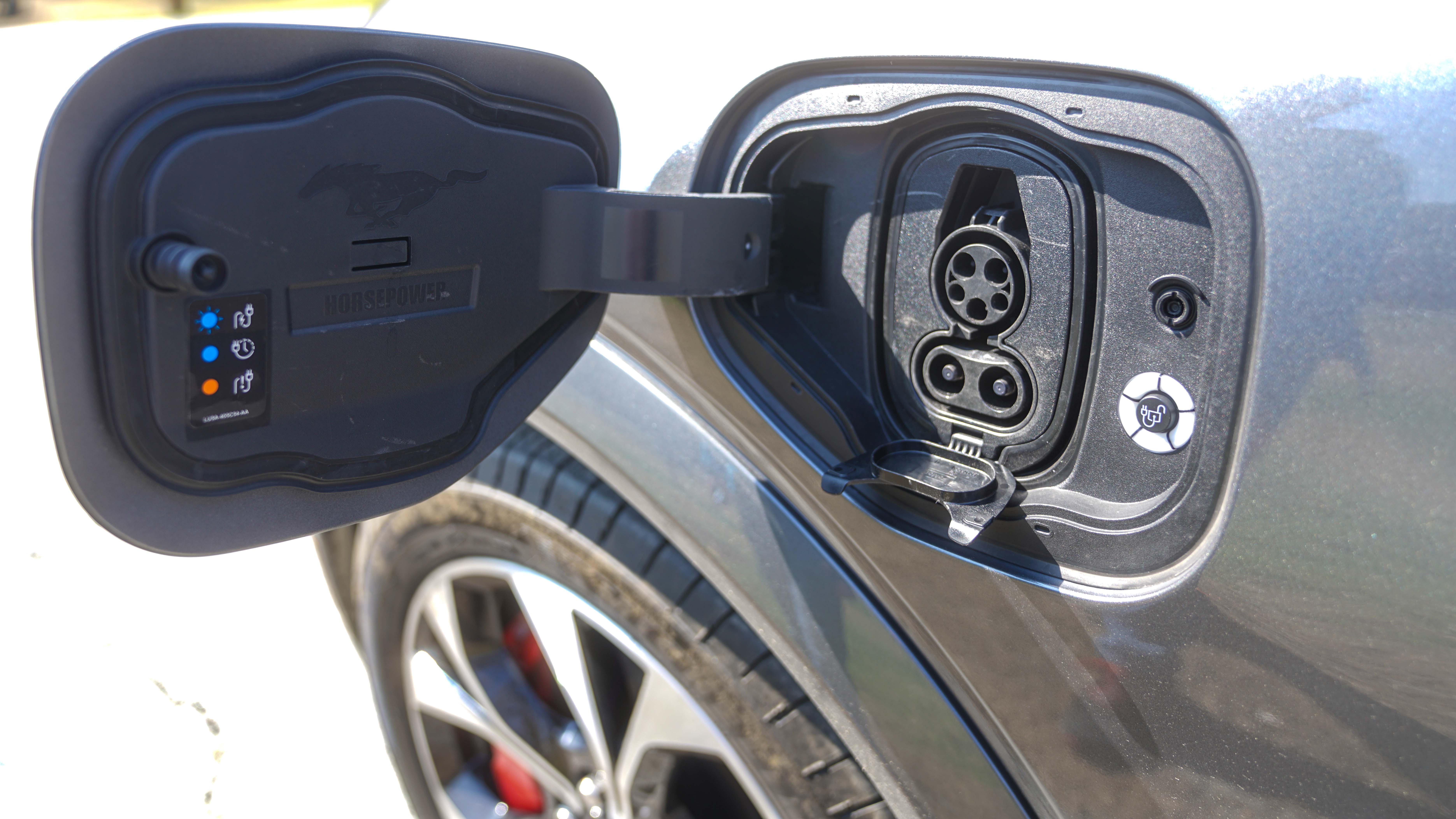
With a rated 270-mile 88 kWh extended range battery, in day-to-day driving we received full-charge estimates of 207 to 239 miles.
All of this is due to exterior temperatures and somewhat to your own driving behavior. Colder weather reduces the range of all EVs, and the Mustang Mach-E was no exception. We drove in 30-degree weather and on sunny days hitting in the 60s.
Furthermore, the software monitors your driving habits and then uses that information to give you more accurate estimates of driving distance. So if you're an aggressive driver who likes to hit the accelerator, you're going to get reduced driving range estimates. We found the estimates were quite accurate, but if you don't, you can go into the car's settings and delete the driving history.
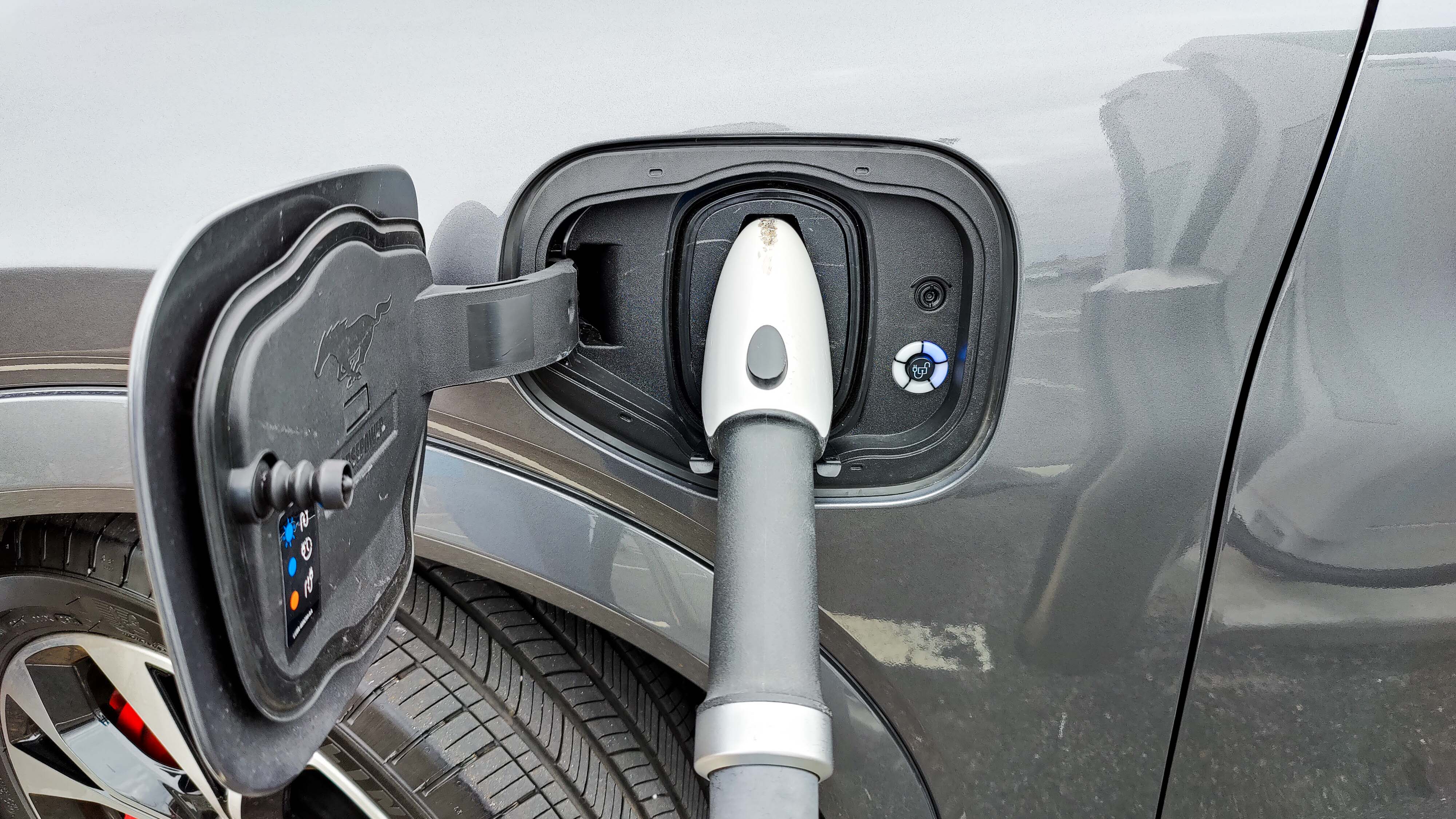
For charging, Ford includes a cable for plugging into a household 120-volt outlet, which is an emergency-only, couple-of-miles-an-hour option. There's also a 240-volt charging cable for NEMA 14-50 outlets, but we used a Level-2 Enel X JuiceBox home charging station for overnight charging.
Plugged in one night, it took 6 hours and 41 minutes to go from 44 percent to 100 percent charge. It usually takes much longer to charge the last 20 percent of the battery. On another day, for example, the Enel X JuiceBox took the Mustang from 81 percent to 100 percent in 2 hours and 41 minutes.
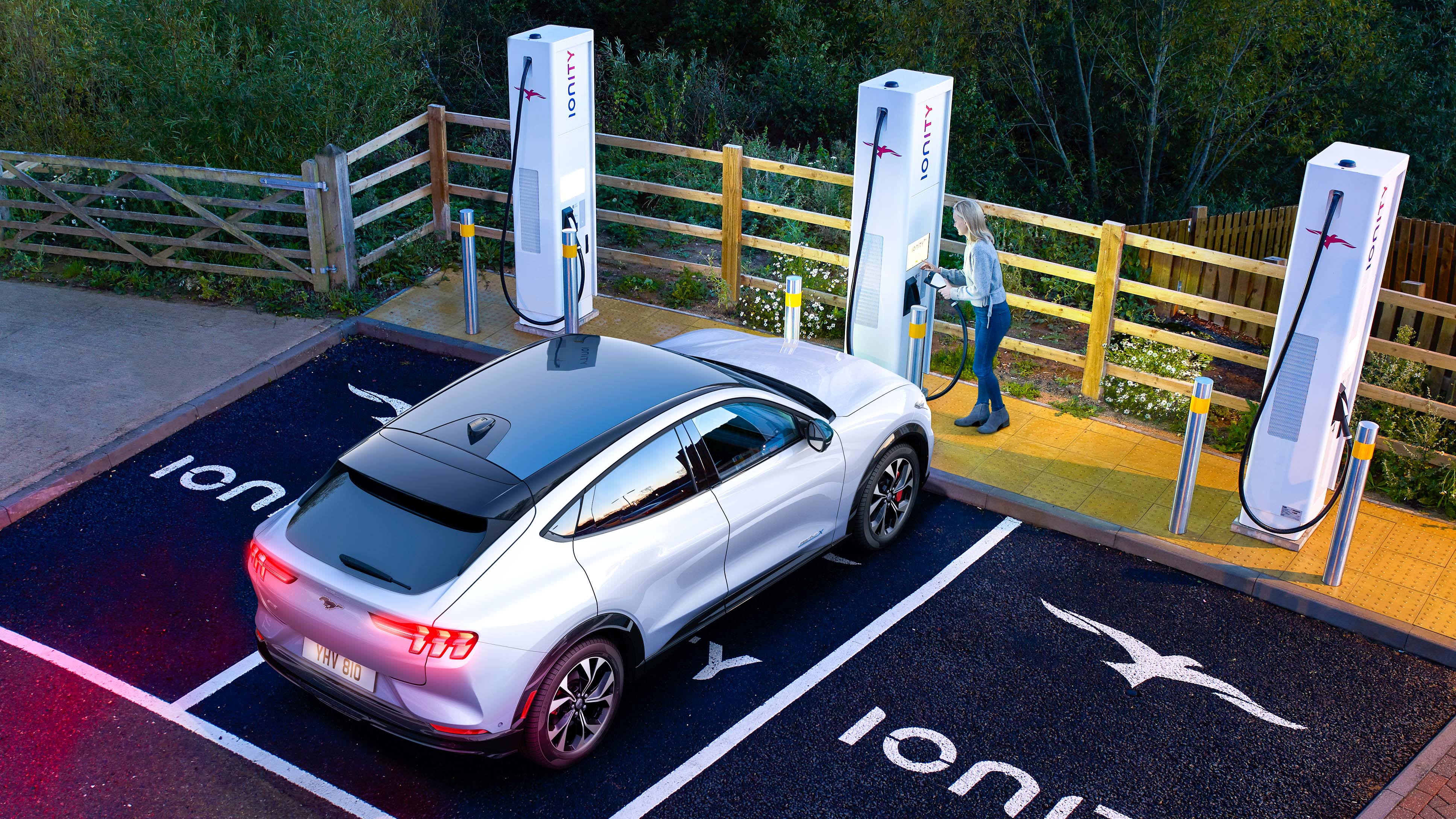
The Mustang Mach-E can also accommodate 150-kW J1772 public fast chargers. Ford has partnered with Electrify America's network of fast chargers, and we availed ourselves of the stations a couple of times. Again, weather will affect how long you have to sit and wait for an 80 percent refill.
On a chilly 35-degree day, it took 37 minutes for us to go from 23 percent to 80 percent capacity (costing just $12.94). On another warmer day in the 50's, to go from 47 percent to 80 percent capacity took 20 minutes (costing $14.93).
The stations can be found easily through the navigation system or using the FordPass app. It will locate a nearby station on your route at the appropriate level charge. (For maximum efficiency, you don't want to run it down below 20 percent, and should only fast charge it up to 80 percent on the road.)
Most charging stations were about 10 minutes out of our way. For some local stations, the FordPass app indicates whether or not the plug was available. If you want out-of-network stations, apps like PlugShare will help you find them.

Arriving at home one night, the temperature dropped to an unseasonable 30 degrees and the Mach-E let us know, via a center cluster message, that it wanted to be plugged in for the night to keep the battery in charge.
Some early Mustang Mach-E owners have noted that Ford has issued a technical service bulletin (TSB), which indicates they need to bring their vehicle in to the dealership for service. In this case, there are reports of the 12-volt battery in the car discharging during fast charges of the main EV battery. The car can still be started using a jump, as you would with a traditional vehicle, but the bug should be corrected at a dealership. We encountered no such problems during our fast charges.
Mustang Mach-E: CoPilot360, self-parking and what’s next
Ford has been through numerous iterations of its Sync in-dash system, and it has faced more than its share of criticism. But in the Sync 4A rev, we think it's pretty much nailed it. Its on-screen tiles are easy to follow, and it can handle over-the-air updates for the car.
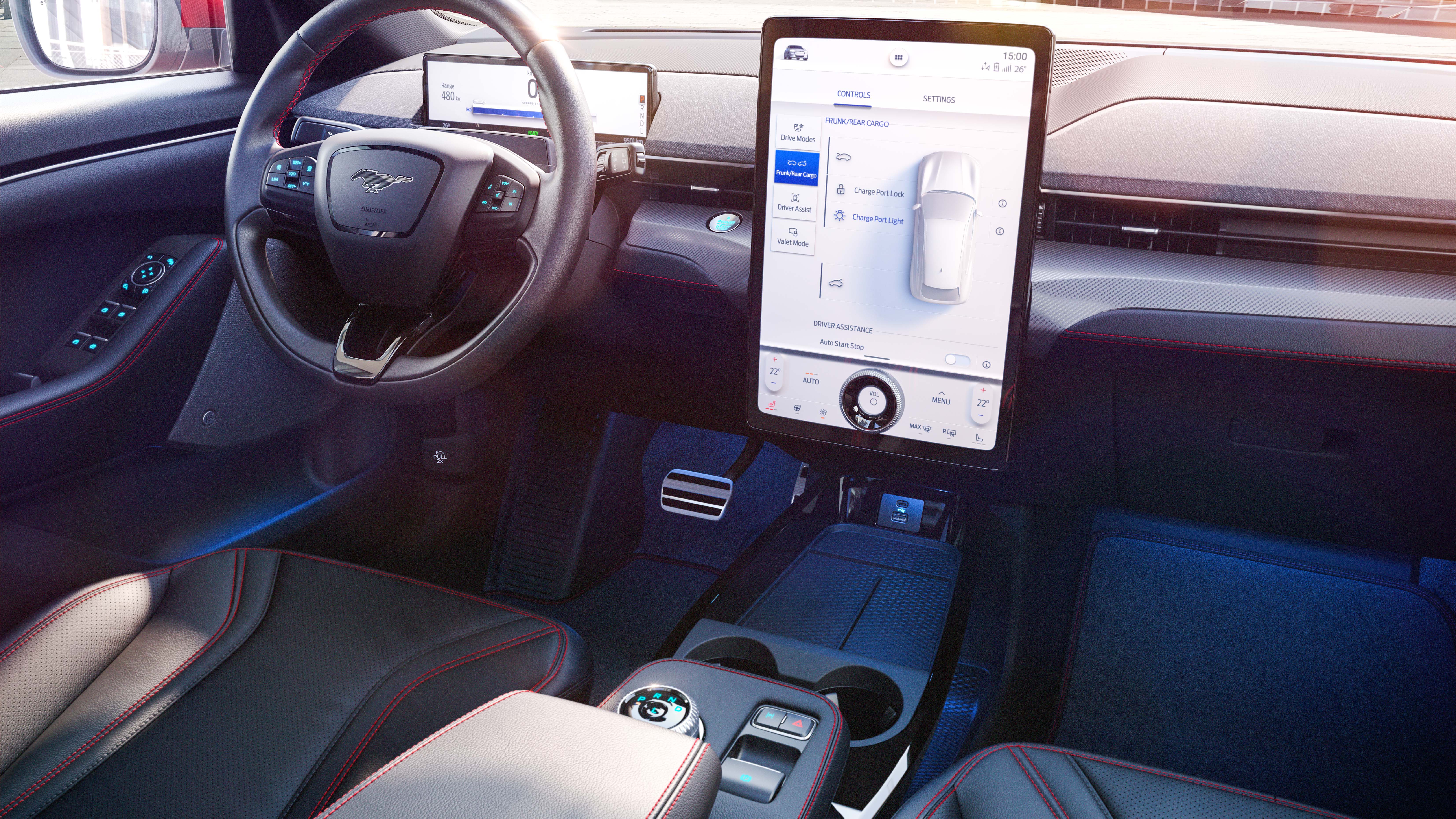
The navigation works well and responds to voice commands. (If you prefer, you can use either Android Auto or Apple CarPlay with your phone.) The car navigation is also seamlessly integrated with the EV side of things, finding and routing us to charging stations with ease.
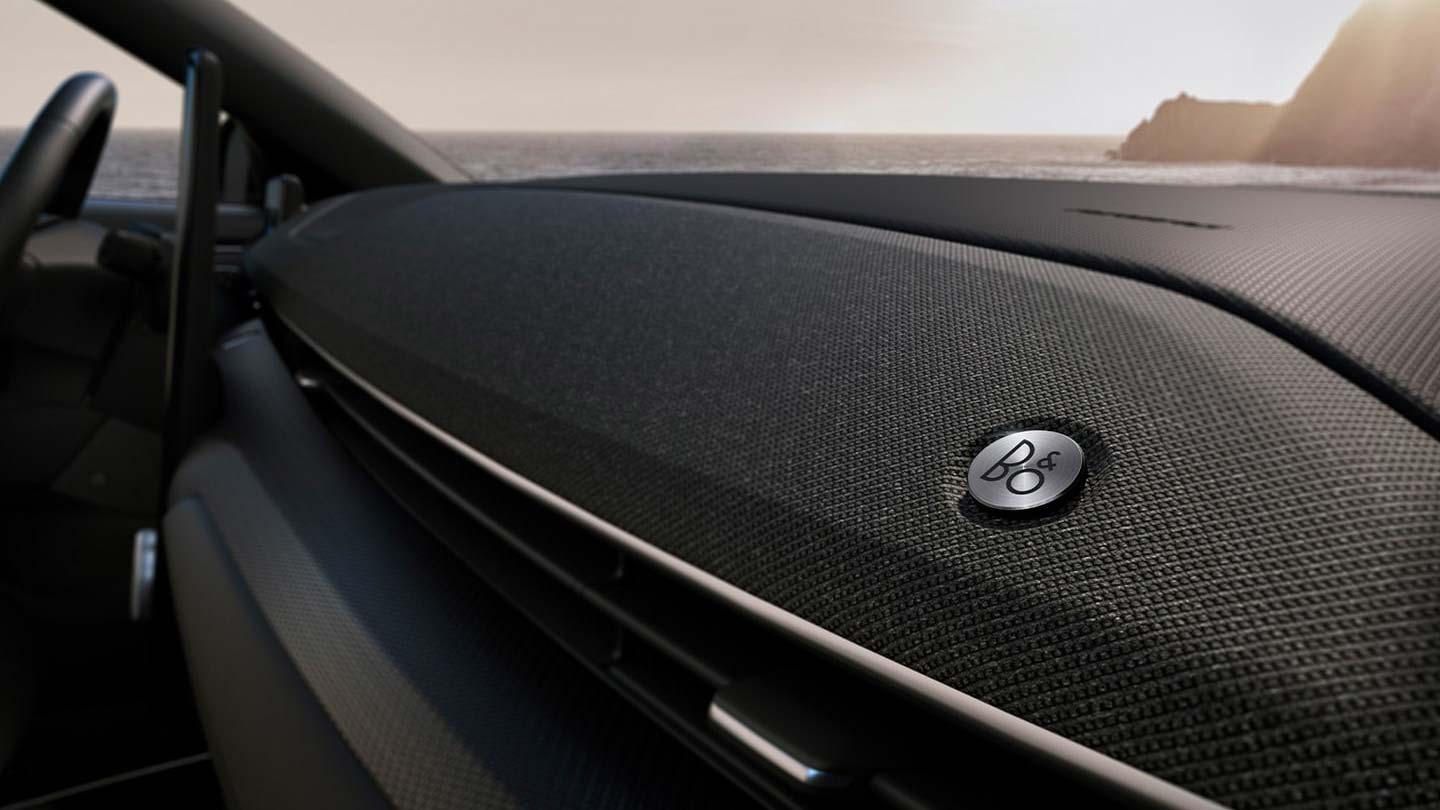
The media system was also simple to master, and thankfully there's a manual dial below the screen for quickly turning down the volume on the Bang & Olufsen premium sound system. It's a well-rounded audio system that does an excellent job delivering vocals and excels at playing jazz and classical tracks. Rock and rollers may find themselves boosting the bass in the EQ settings.
In terms of driving technology, Ford's planned semi-autonomous Active Drive Assist package has not yet been released. When it comes out later this year, it will work much like GM's Super Cruise, allowing for complete hands-free driving on 100,000 miles of previously mapped divided highways, according to Ford. We noticed that the infrared camera array on the steering column to monitor driver awareness is ready and waiting for the software. (It will be available over-the-air for the premium Mach-E models; pricing hasn't been announced for the base Select model.)
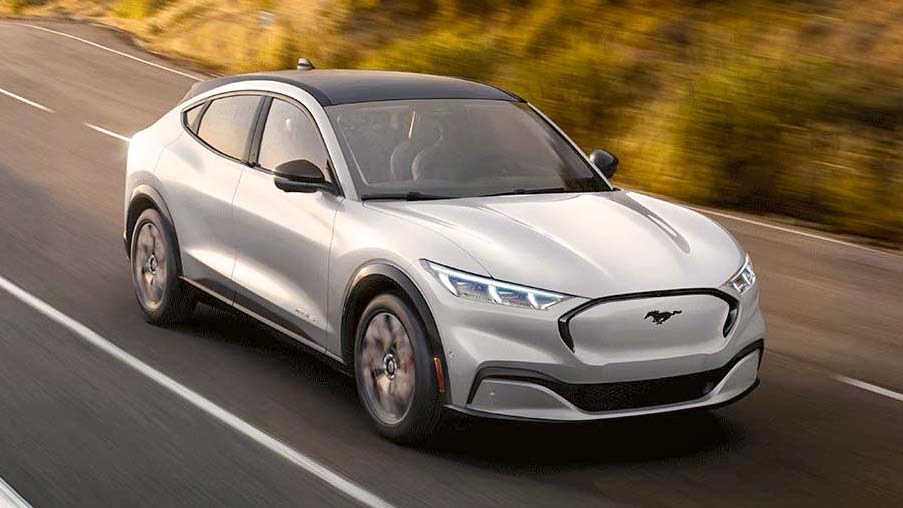
Ford's semi-autonomous Active Drive Assist package will allowing for complete hands-free driving on 100,000 miles of previously mapped divided highways.
The current Co-Pilot360 suite of active driver assistance safety systems (ADAS) already offers a lot. We particularly liked the intelligent adaptive cruise control, which performed well over hundreds of highway miles. It's smart enough, for example, that when passing cars cut back in front of you but are accelerating away, it won't nervously tap the brakes. It also worked well in stop-and-go traffic and will stay engaged even when it's stopped for up to 30 seconds. The ADAS system also picked up all the highway speed changes via sign recognition and slowed accordingly. That can be a real ticket-prevention feature, although it did miss two in-town speed changes.
We were less impressed with Ford's lane keeping assist feature. It's intended to keep you from wandering out of your lane, but we found it was too passive for our taste. You can set it to be more aggressive, which we did, but found it was still too tentative. Other drivers may feel differently, and Ford could tweak it in the future via over-the-air updates.
Blind spot warnings were virtually flawless, and we loved the 360-degree, birds-eye view when parking the car at low speeds, particularly when tucking the Mach-E into a very snug garage for the night.
We also tested the self-parking feature a few times. With the push of a button, it allows you to drive past a parking spot until the car recognizes the opening then tells you it's going to take over. Remove your hands and feet from the controls and the car does the rest in perpendicular and parallel parking situations. It can behave like a cautious teenage driver, making multiple small back-and-forth adjustments, but unlike teenage drivers, it kept the car ding-free.
There were some notable design touches we really appreciated. The angle of the driver and front passenger headrests can be adjusted; you don't know how important this is to driving comfort until you've put 400 miles in a car where fixed headrests make you feel like you're crouching in the front seat.
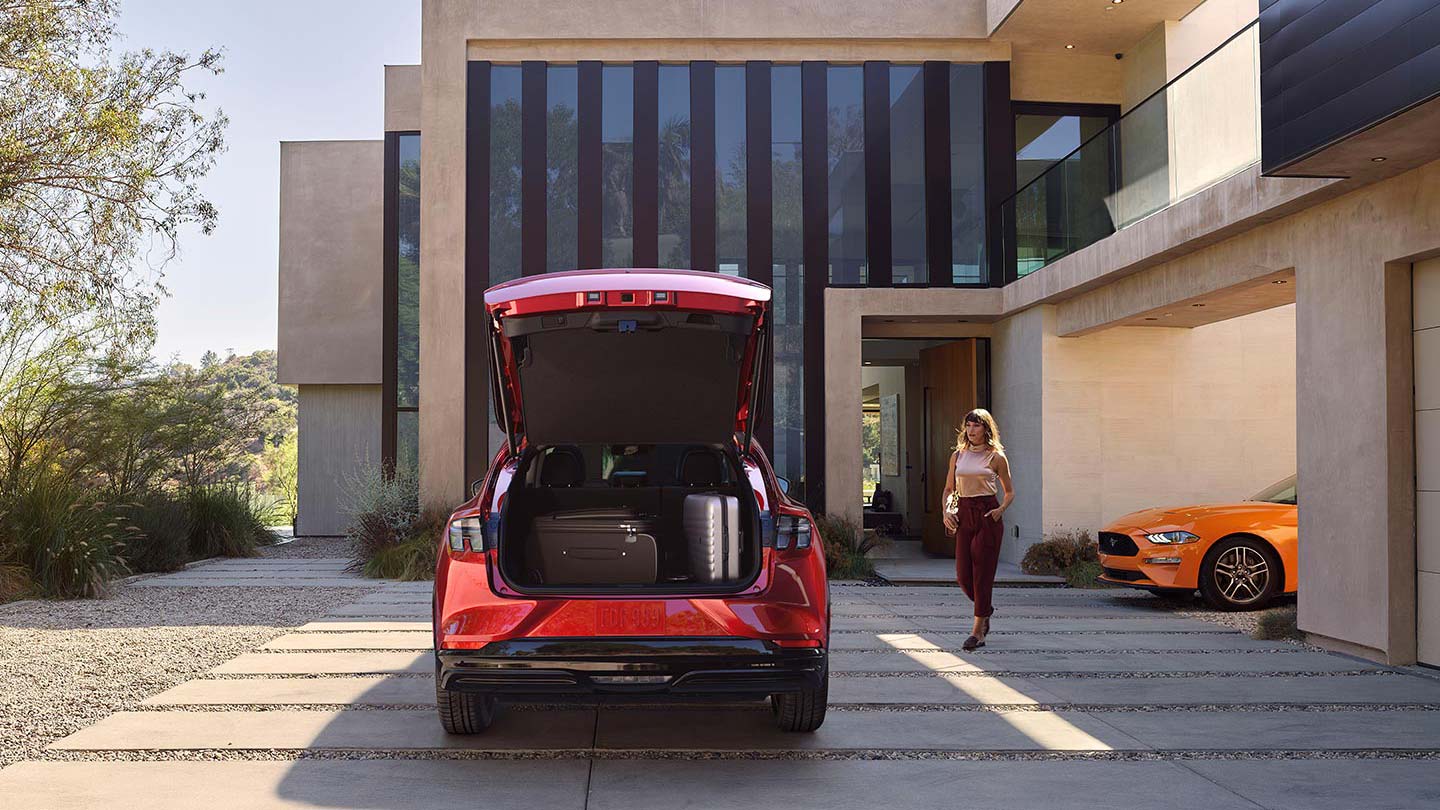
We also very much liked the fact that you can adjust the opening height of the rear hatchback. Normally, it flips all the way up for maximum ease of access, but in our cramped garage, it would have hit the ceiling. Ford engineers anticipated this and let you adjust how high the hatch goes via software controls in the dash.
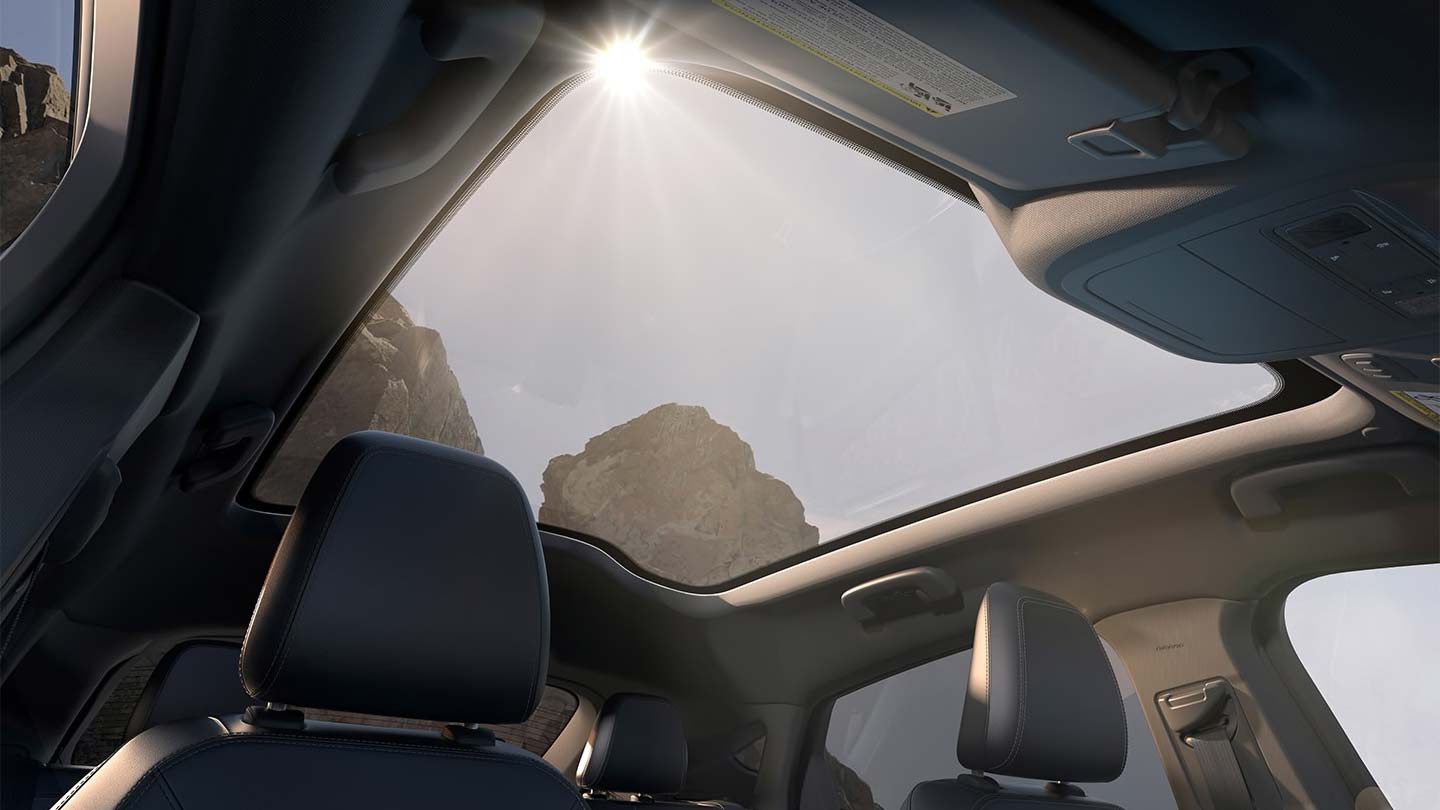
On the downside, the panoramic roof — a high-end feature — proved to be annoying because there's no shade you can pull across it on bright sunny days. It's still not blindingly bright in the car, but being able to completely cover it would help with visibility of the dashboard screens and reduce eye strain.
Mustang Mach-E review: Verdict
A comfortable drive and a comfortable ride, there's not much that people can fault in the Mustang Mach-E, save for the fact that it's a Mustang in name only. What it is, is a solidly built electric vehicle that feels like a luxury sedan, and that's not a bad thing. It has pep yet is steady on the highway. Ford has refined its Sync infotainment system, as well, and added some truly smart driving assistance, like the very intelligent adaptive cruise control. We just wish the semi-autonomous driving software was ready, and that the car had more range. But then again, we wish that of all EVs.
John R. Quain has been reviewing and testing video and audio equipment for more than 20 years. For Tom's Guide, he has reviewed televisions, HDTV antennas, electric bikes, electric cars, as well as other outdoor equipment. He is currently a contributor to The New York Times and the CBS News television program.

